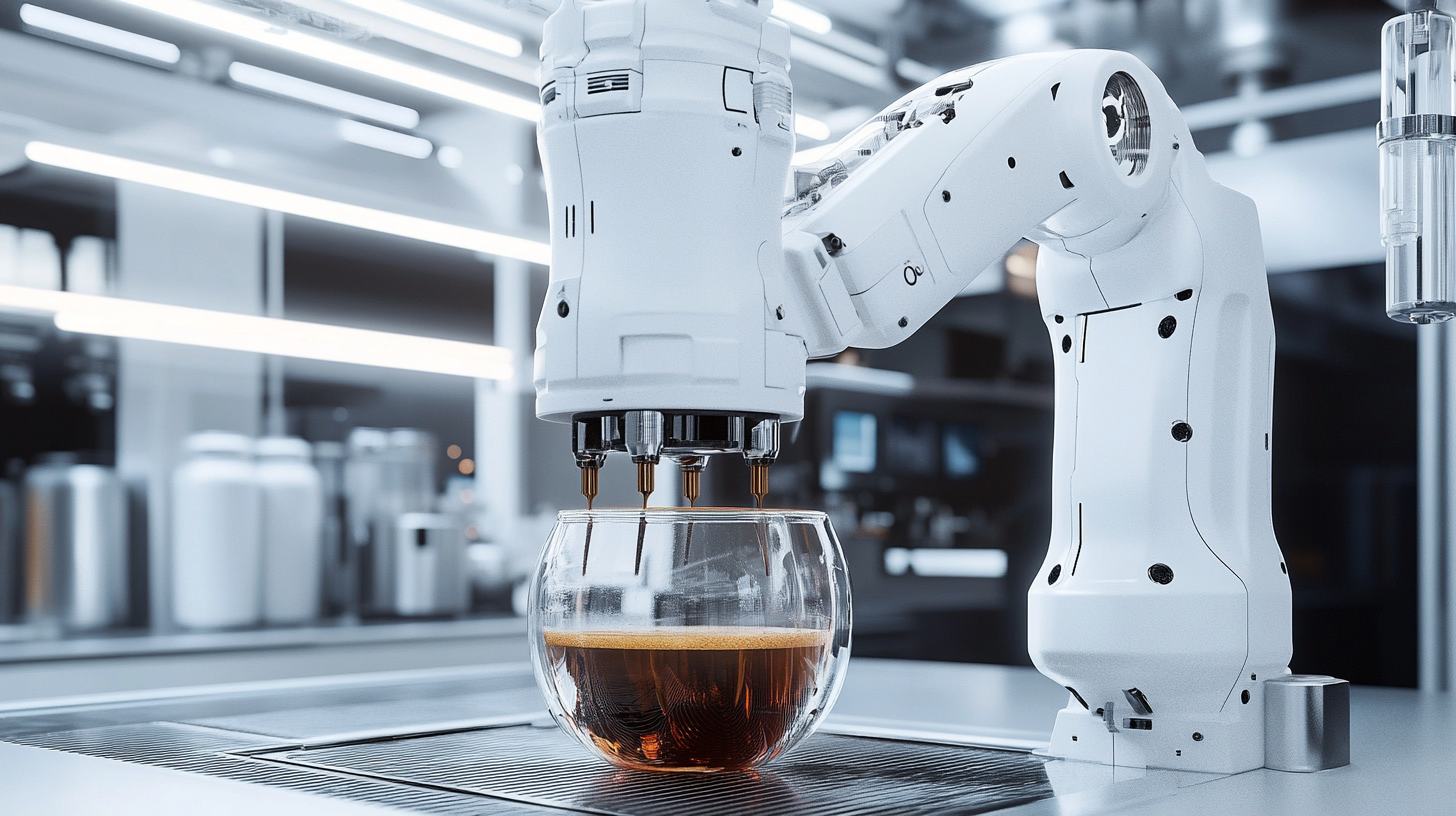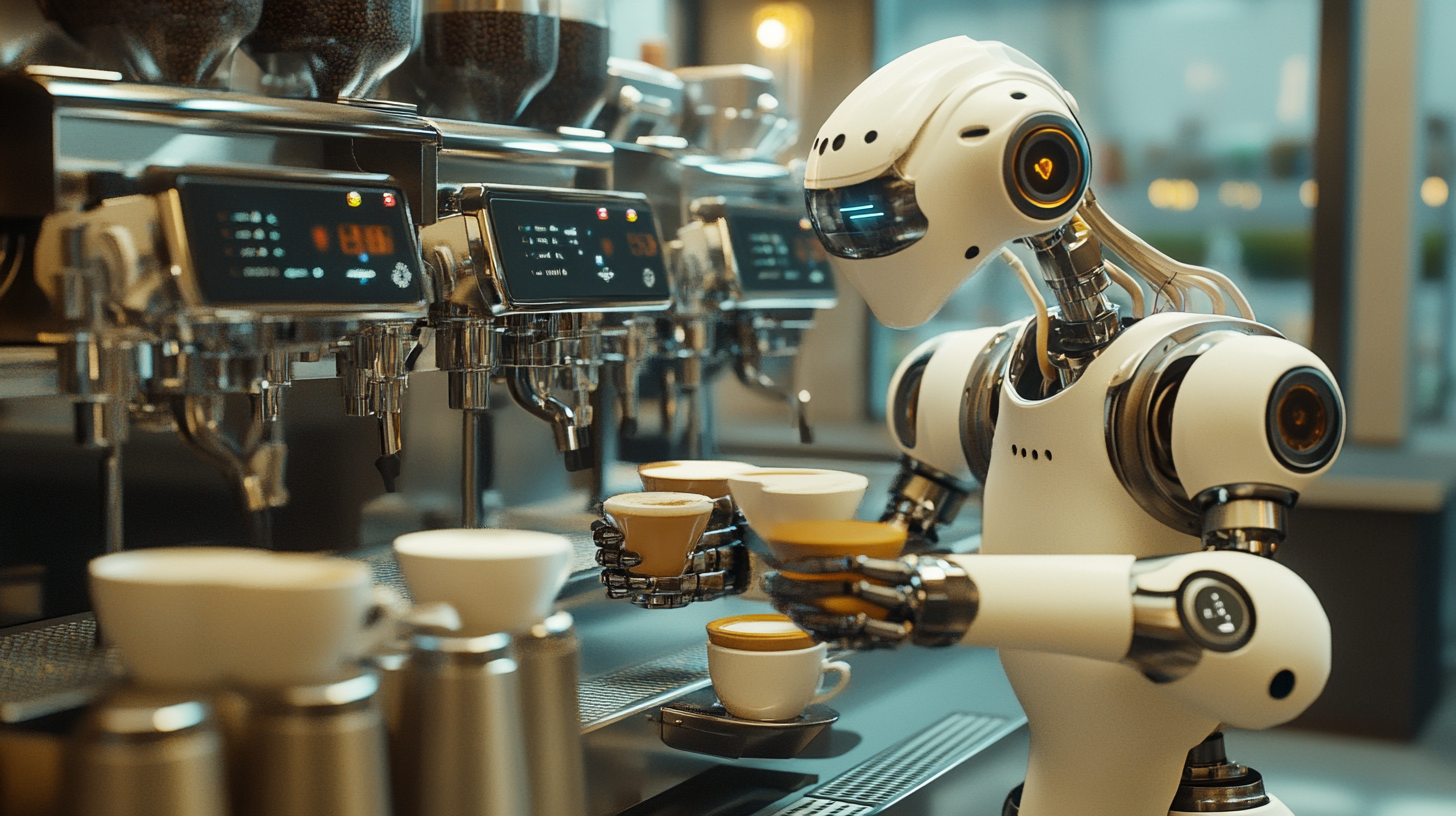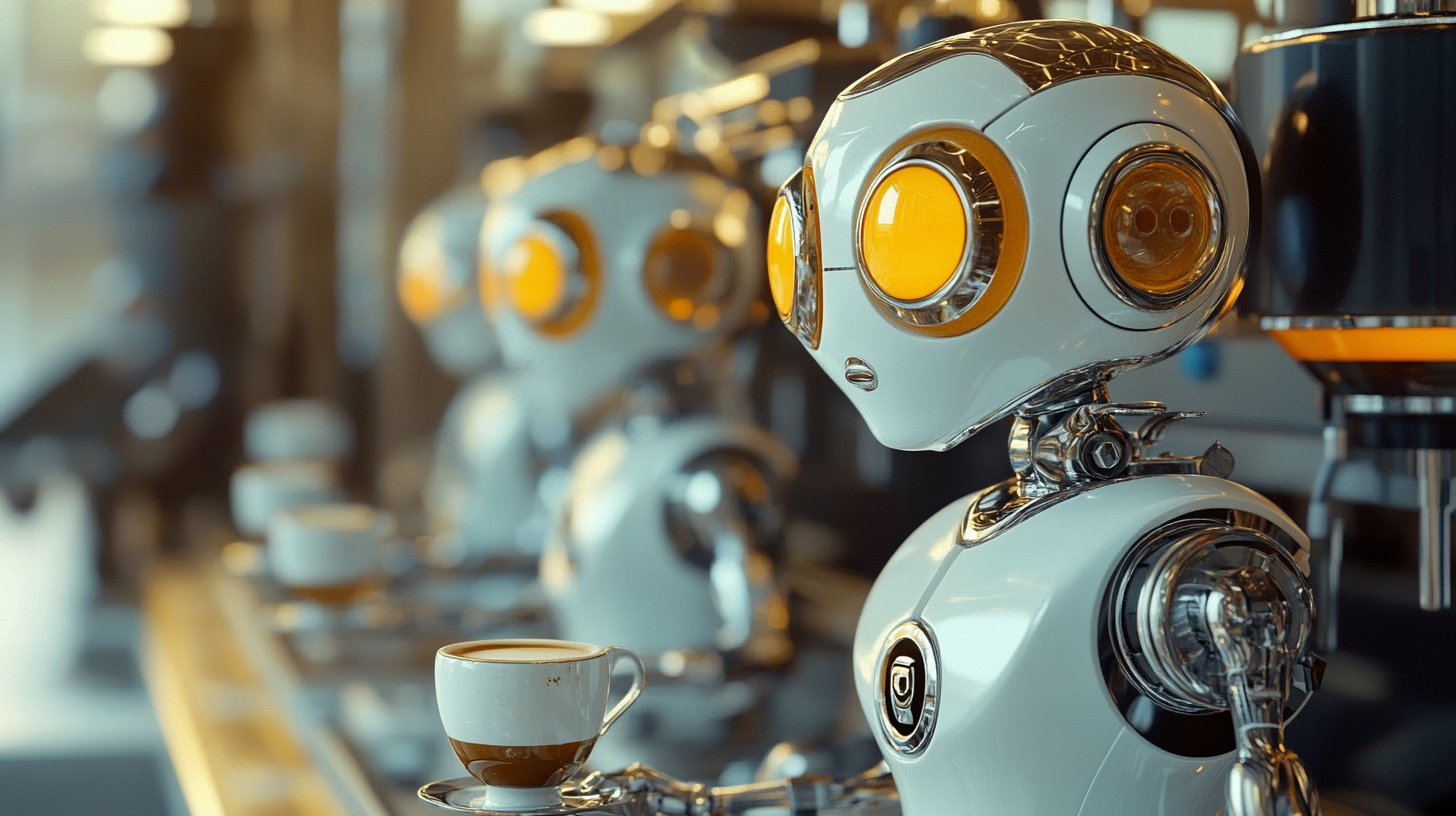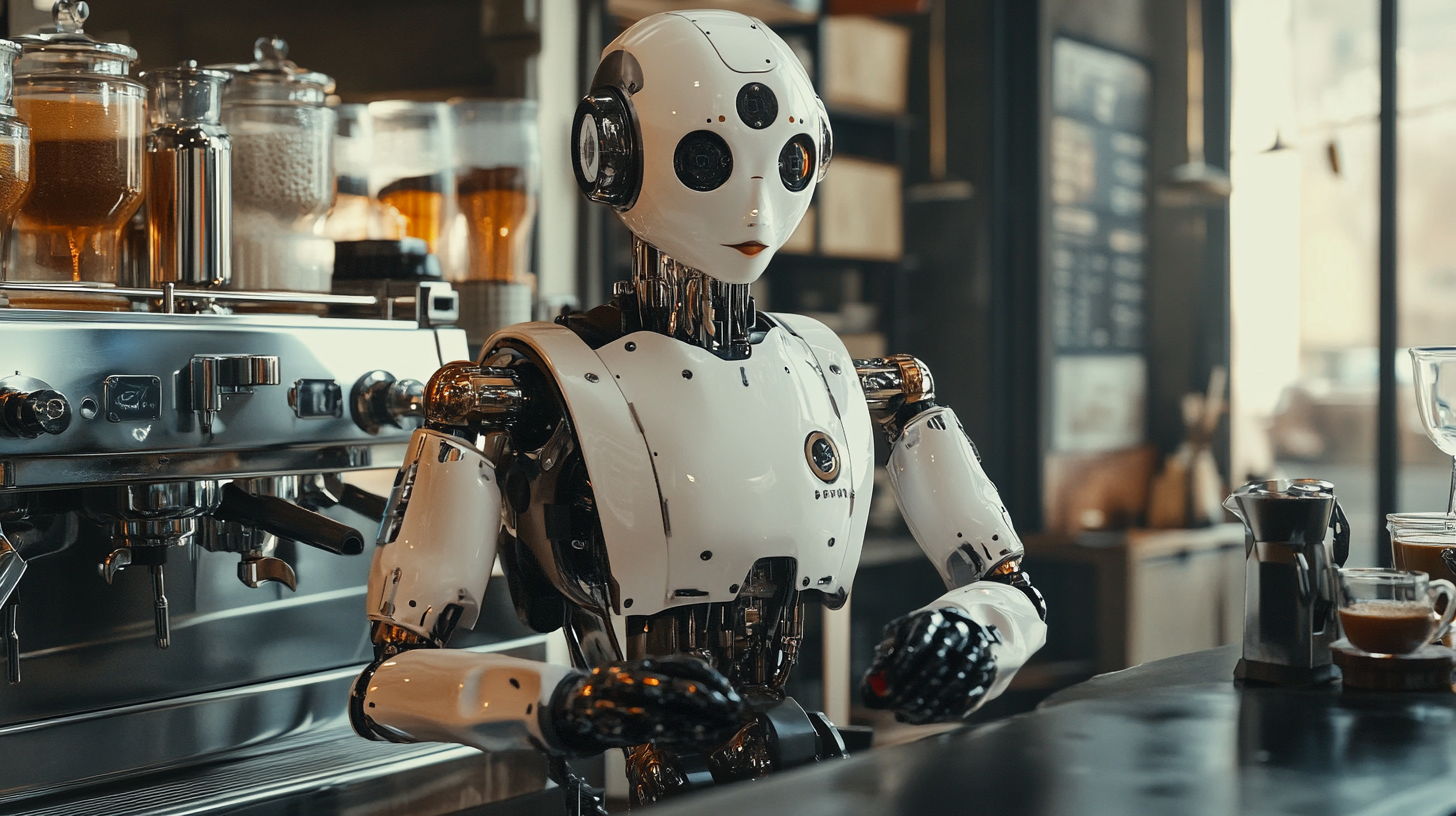Challenges in Achieving Precision Coffee Brewing Standards with Barista Robots
The coffee industry has witnessed a significant transformation in recent years, shifting towards automation and precision brewing to meet the evolving preferences of consumers. With global coffee consumption expected to reach over 200 million 60-kilogram bags by 2025, the demand for consistent quality and efficiency in coffee preparation has never been higher. Barista robots, equipped with advanced technology, promise to deliver precision brewing standards that can eliminate human error and cater to the complex palate of today’s coffee drinker. However, despite the advancements in robotics, challenges remain in achieving the perfect cup of coffee consistently.
One of the primary hurdles in integrating Barista robots into coffee preparation is replicating the artistry and sensory skills that experienced baristas bring to the craft. According to a report by the Specialty Coffee Association, 80% of coffee drinkers value the expertise of a skilled barista, highlighting the importance of human touch in flavor nuance and presentation. As we explore the intersection of technology and tradition, it becomes crucial to address these challenges in precision coffee brewing standards, ensuring that Barista robots can not only meet but exceed consumer expectations while retaining the soul of the coffee experience.

Barista Robots: The Rise of Automation in Coffee Brewing
The emergence of barista robots has revolutionized the coffee brewing landscape, marking the rise of automation in an industry traditionally characterized by the artistry and skill of human baristas. These robotic systems promise consistency, speed, and precision—factors that are increasingly appealing in a fast-paced consumer environment. As cafes and coffee shops seek to enhance efficiency, robots equipped with advanced technologies have begun to take on the brewing tasks, ensuring that each cup is crafted to perfection, tailored to the preferences of individual customers. Nonetheless, the transition to automated coffee brewing isn't without its challenges. While barista robots excel in maintaining standardization, achieving the nuances of precision—such as optimal extraction levels and flavor profiles—remains a daunting task. Each coffee variety has unique requirements, and replicating the intuitive skills of an experienced barista often proves difficult for machines. Moreover, the lack of human touch can detract from the overall coffee experience that many connoisseurs value. As a result, the coffee industry must navigate the delicate balance between technological advancement and preserving the artisanal qualities that define exceptional coffee brewing. As automation continues to rise, the question remains: can artificial intelligence truly replicate the passion and creativity of a human barista? The ongoing development of barista robots must address these fundamental questions while striving to push the boundaries of what's possible in coffee brewing. Ultimately, the fusion of technology and human expertise may lead to an innovative future, where barista robots and skilled artisans coexist to elevate the coffee experience to new heights.

Understanding Precision Standards in Coffee Brewing
Achieving precision standards in coffee brewing is a nuanced challenge that is increasingly relevant in today’s specialty coffee landscape. According to a recent report by the Specialty Coffee Association, nearly 70% of coffee consumers prefer a brewing method that guarantees consistency in flavor, aroma, and strength. This growing demand for uniformity is driving the development of advanced barista robots, which promise to eliminate human error while adhering to strict brewing parameters.
Precision brewing standards encompass several factors, including temperature, brew time, water quality, and coffee-to-water ratio. For instance, the ideal brewing temperature ranges between 195°F to 205°F, as highlighted in an industry analysis by the Coffee Quality Institute. Deviations from this range can lead to under-extraction or over-extraction, adversely affecting the final cup quality. The challenge lies in calibrating barista robots to consistently replicate these intricate variables, requiring sophisticated programming and real-time adjustments.
Additionally, research indicates that water composition is crucial to achieving the best flavor profiles. Data shows that water with balanced mineral content can amplify the nuances of coffee beans, contributing to an overall superior taste experience. As barista robots integrate more sensors and analytical tools, they may eventually replicate the expertise of a skilled barista, but the journey to mastering precision standards in coffee brewing remains an ongoing challenge in the evolving landscape of automated coffee preparation.

Technical Challenges Faced by Barista Robots in Brewing
Barista robots have emerged as a fascinating innovation in the coffee brewing industry, aiming to bring precision and consistency to the craft. However, the transition from traditional brewing methods to robotic systems is fraught with technical challenges. One primary obstacle lies in calibrating the machines to replicate the nuanced techniques of skilled baristas. Each coffee possesses unique characteristics, from grind size to water temperature, and achieving the perfect balance is essential for an exceptional cup.
Another significant challenge is the integration of sensory technology into robotic systems. Understanding the coffee's aroma, flavor profile, and even visual appeal requires advanced sensory capabilities that currently exceed many robotic designs. While machines can measure temperature and pressure with precision, they often lack the ability to interpret subtle cues that a human barista would instinctively recognize, such as the richness of crema or the harmony of flavors during tasting.
Moreover, variations in coffee beans sourced from different regions can complicate the brewing process. Barista robots must adapt to these differences, necessitating sophisticated algorithms that allow them to adjust parameters dynamically. This requires a level of machine learning and artificial intelligence that is still in its infancy in terms of practical applications within the coffee industry. Addressing these technical challenges will be crucial for barista robots to not only brew coffee with precision but also to create a genuinely delightful coffee experience for customers.

The Role of Sensory Evaluation in Automated Coffee Quality
In the quest to enhance and standardize coffee brewing, barista robots are emerging as innovative yet challenging players. However, one crucial aspect that often gets overlooked is the role of sensory evaluation in ensuring that these automated systems produce quality coffee. Sensory evaluation encompasses the holistic assessment of aroma, flavor, mouthfeel, and aftertaste, all of which are essential in defining a great cup of coffee. For barista robots to achieve precision brewing standards, they must not only rely on algorithms and data but also integrate sensory analysis into their processes.
Automated coffee machines typically focus on precise measurements of time, temperature, and extraction time, yet they often lack the nuanced understanding that human baristas possess. Sensory evaluation acts as a bridge between the technical and experiential realms of coffee brewing. By incorporating sensory feedback loops, machines can adapt their brewing techniques based on real-time evaluation from trained tasters or advanced AI systems programmed with an extensive database of flavor profiles. This approach allows for a more dynamic brewing process, where adjustments can be made to optimize the sensory characteristics of the coffee.
Furthermore, as consumer preferences shift towards unique and artisanal coffee experiences, the importance of sensory evaluation becomes even more pronounced. Barista robots must evolve beyond their initial programming and embrace a more adaptable brewing methodology that can cater to varying tastes and styles. This shift represents a significant challenge but also an opportunity to harmonize the precision of automation with the art of coffee tasting, leading to a new era of coffee brewing standards that can cater to both consistency and creativity.
Future Prospects: Bridging the Gap Between Robots and Human Baristas
As the coffee industry continues to embrace technological advancements, the future prospects of barista robots present both opportunities and challenges. The idea of bridging the gap between robotic precision and the nuanced skills of human baristas is a pressing topic in today’s coffee culture. While robots excel in consistent brewing techniques, they often struggle to replicate the artistry and creativity that human baristas bring to the table. This dynamic invites further exploration into how technology can complement rather than replace the traditional coffee experience.
One promising approach to bridging this gap lies in the development of hybrid models that combine the strengths of both robots and human baristas. For instance, robots could handle the repetitive tasks of brewing, allowing human baristas to focus on customer interaction and personalized service. This collaboration could enhance the overall coffee experience, making it more efficient while still retaining the essential human touch. Furthermore, the use of AI in understanding customer preferences could lead to tailored recommendations that make each visit unique.
Additionally, training programs that foster collaboration between human baristas and robots could play a vital role in this integration. By educating baristas on the technology's capabilities and limitations, they can better utilize robotic systems to their advantage. This synergistic relationship could redefine the coffee brewing landscape, enabling establishments to offer high-quality beverages that meet the evolving demands of consumers while preserving the artisanal legacy of coffee making.